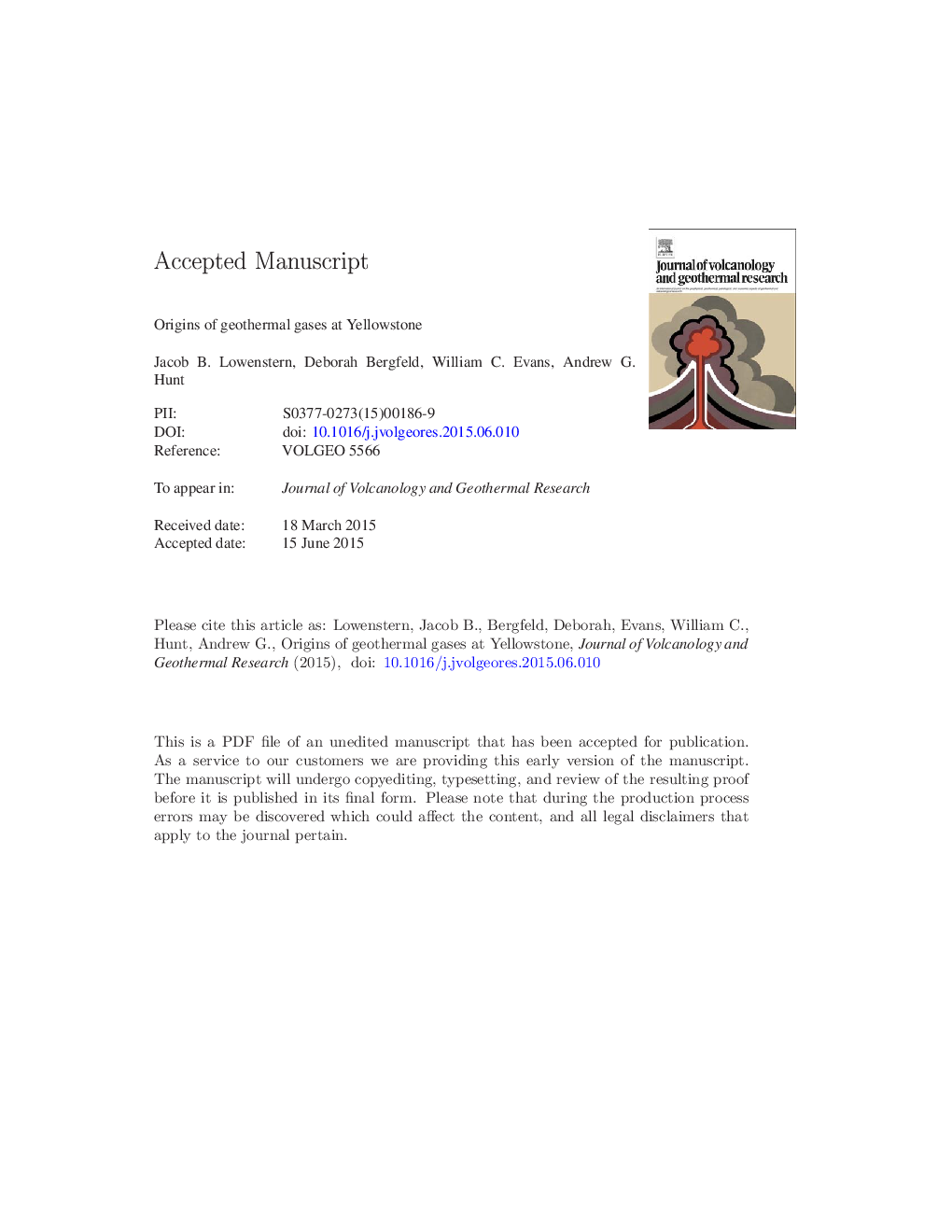| Article ID | Journal | Published Year | Pages | File Type |
|---|---|---|---|---|
| 6439747 | Journal of Volcanology and Geothermal Research | 2015 | 68 Pages |
Abstract
The δ13C and 3He/CO2 of gases reflect a dominant mantle origin for CO2 in Yellowstone gas. The mantle signature is most evident at Mud Volcano, which hosts gases with the lowest H2O/CO2, lowest CH4 concentrations and highest He isotope ratios (~ 16Ra), consistent with either a young subsurface intrusion or less input of crustal and meteoric gas than any other location at Yellowstone. Across the YPVF, He isotope ratios (3He/4He) inversely vary with He concentrations, and reflect varied amounts of long-stored, radiogenic He added to the magmatic endmember within the crust. Similarly, addition of CH4 from organic-rich sediments is common in the eastern thermal areas at Yellowstone. Overall, Yellowstone gases reflect addition of deep, high-temperature magmatic gas (CO2-rich), lower-temperatures crustal gases (4He- and CH4-bearing), and those gases (N2, Ne, Ar) added principally through boiling of the meteoric-water-derived geothermal liquid found in the upper few kilometers. We also briefly explore the pathways by which Cl, F, and S, move through the crust.
Related Topics
Physical Sciences and Engineering
Earth and Planetary Sciences
Geochemistry and Petrology
Authors
Jacob B. Lowenstern, Deborah Bergfeld, William C. Evans, Andrew G. Hunt,
